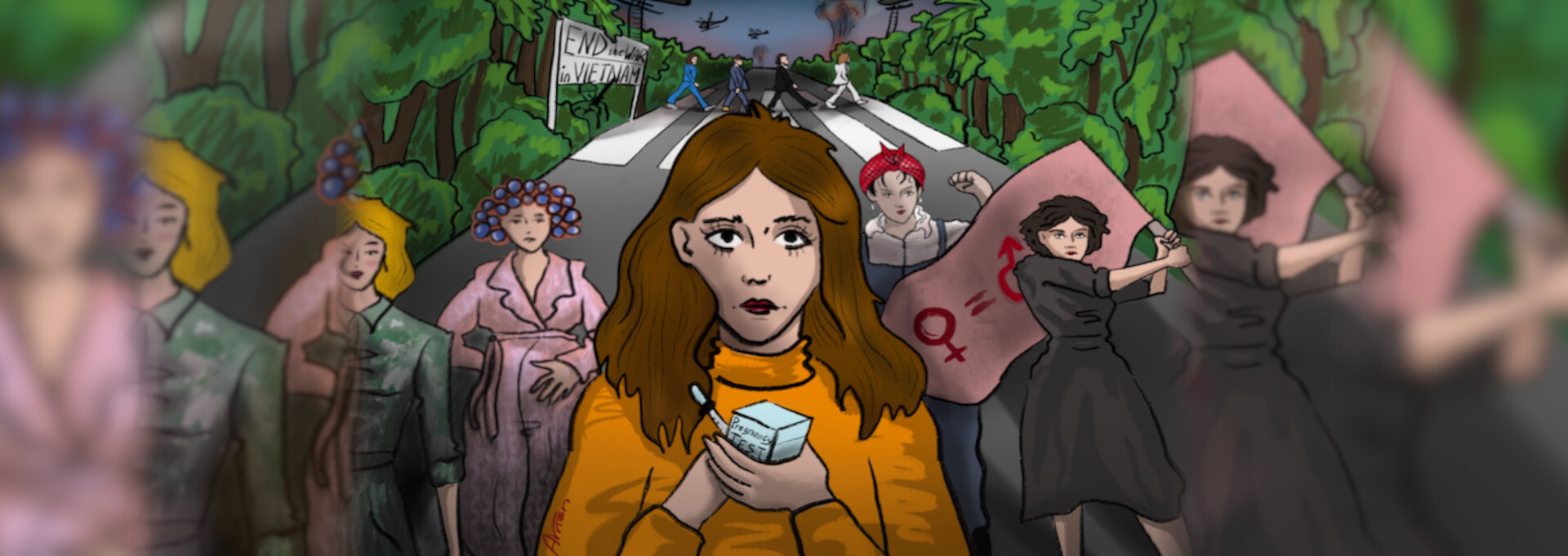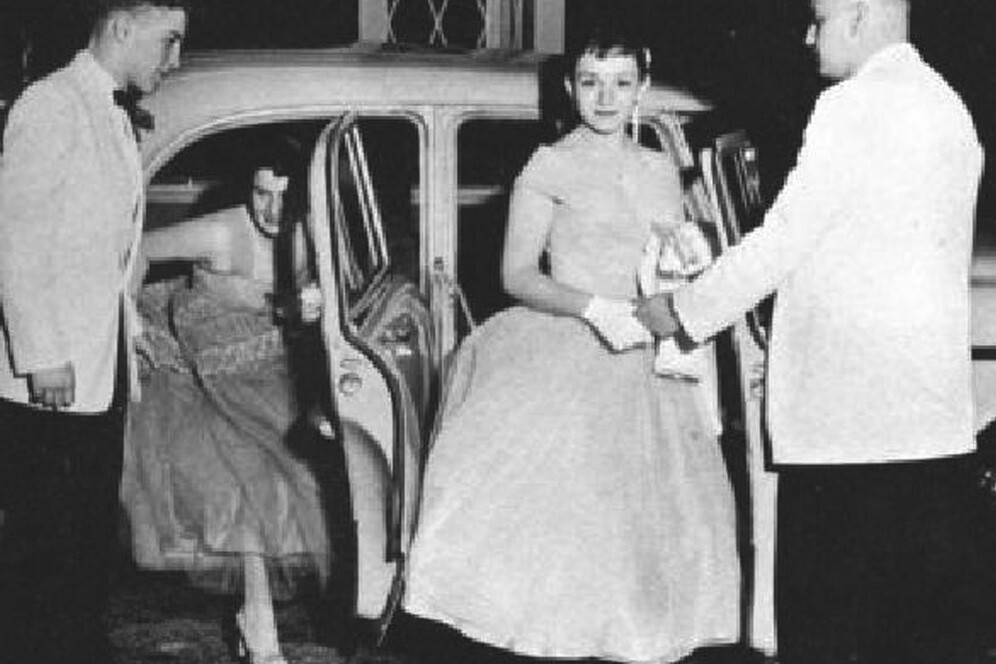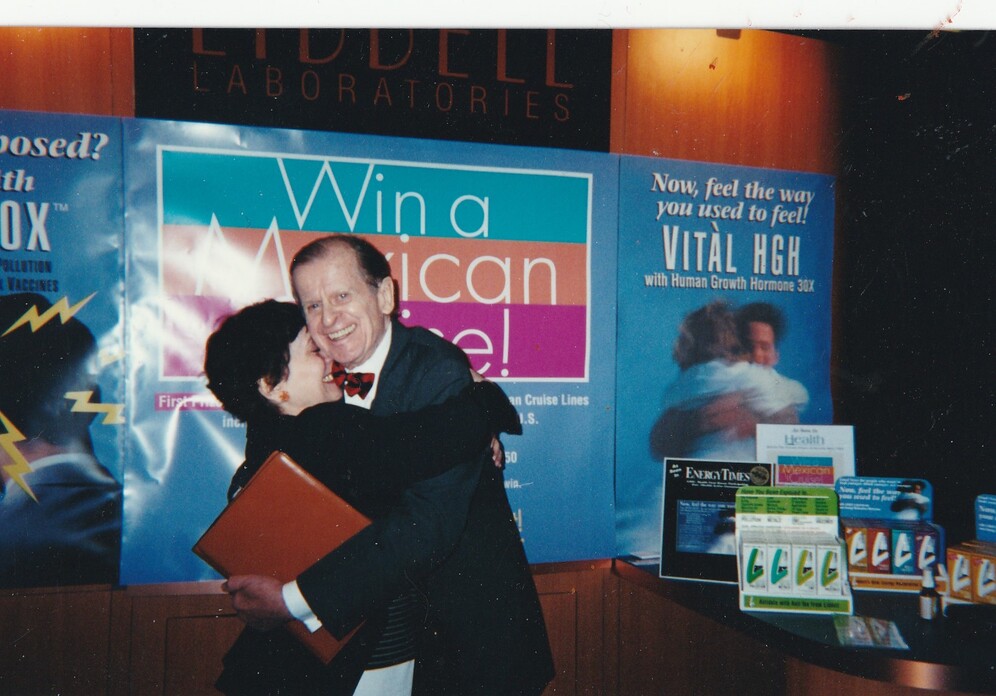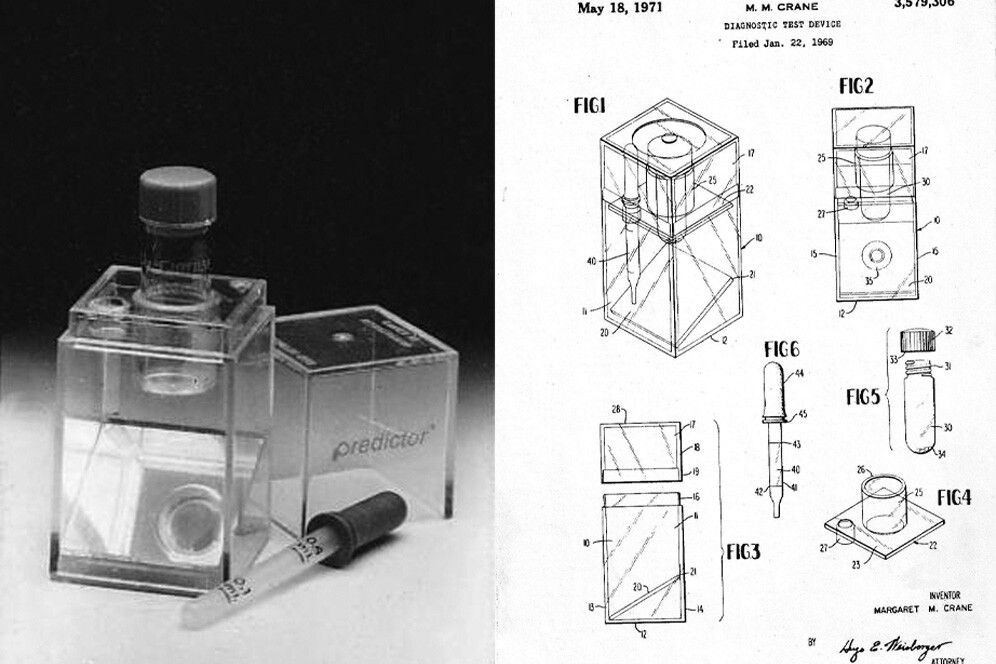A graphic designer, a paper clip box and a toilet: How the home pregnancy test changed women's lives

A 1978 advert in Vogue called the first home pregnancy test a "private little revolution any woman can easily buy at her drugstore," — a revolution made possible by a 26-year-old graphic designer. Meg Crane's invention contributed to the feminist movement and let the women reclaim their privacy and their bodies.
Articles about Meg Crane's innovation often refer to her as real-life Tess McGill or Peggy Olson from the TV series Mad Men. The story of the go-getter who came up with a groundbreaking solution, and the guts to see it through is being made into a movie. In an interview with RTD, Meg tells her life story and how a contraption made of a paper clip box and an eye dropper turned a bathroom visit into a manifest of reproductive freedom and independence for women.
"Doctors didn't tell the parents what was happening, but they didn't help the girl, either"
My first high school in New Jersey was an all-girl school, a Catholic academy. I was there for two years until my parents moved to Jersey City. The new one was a mixed co-ed school. I did have a boyfriend during that time, but we weren't getting into sexual conditions or anything. My friends and I, we went out together as a group most of the time. Getting pregnant out of wedlock was very difficult, but it depended on the person and their background. When I was in high school, the favourite girl in my class, who was very pretty, and the favourite boy, who was a football player, got pregnant together. It was very unusual that they got married; they were 15 and 16 years old — pretty shocking for the other people in the school. I don't know whatever happened to that marriage.

But then I went to an art school in NYC, first to study fashion illustration and then switched to graphic design. It was very, very different, largely because it was mostly fashion designers.
It was more like a social revolution here because of what was happening in society. People were against the war in Vietnam, and young people were marching, and then the Beatles came along, and music changed…
I had friends, who did get pregnant, and one of them had to find a place to have an abortion, which was very difficult — abortions were illegal till 1973. There was another who decided she would have her baby by herself because she was too scared to have an abortion.
In some states, the watch over pregnant girls happened more than in others; even today, some states are very anti-abortion. They want the parents to know if the girl is pregnant. New York was a little different than that. Doctors didn't tell parents what was happening, but they didn't help the girl, either.
If someone found themselves in that position, they had to find somebody on the grapevine who knew what to do. It was difficult, and I think that's when I first saw the possibility for women to test themselves — there was a point in my mind that women should know that as soon as they could. Again, this was all happening before abortion was legal.

History of abortion
In colonial America, abortions were condemned if done after the so-called "quickening", that is the first movements of the foetus. However, the penalty was only aimed at punishing the abortion as a result of the covert sexual relations. The first articulate abortion legislation was drafted in the early 19th century to keep unlicensed medics from performing the procedure. In the 20th century, the diversity and complexity of the abortion cases made all the existing legislation inefficient. Ronald Reagan's Therapeutic Abortion Act of 1967 allowed for legal abortions when a woman's life or mental health was at risk, or if the pregnancy was ruled to be the result of rape or incest. The law to fully legalise abortions was passed following the landmark 1973 Roe v. Wade case.
A test from scratch
I moved into NYC and worked at Harper's Bazaar and in another small advertising agency as a freelancer. At the time this job in a pharmaceutical firm in New Jersey came up, I'd been having a hard time freelancing because it's very hard to make money that way in NYC, plus, I didn't have much experience. So, I applied there and the company, Organon, hired me. It was a very long way to get to work — it took me a couple hours sometimes to go there and a couple of hours to come home. I was supposed to design cosmetics, but it didn't happen.
I wasn't terribly happy about that. They put me into this building with just one other woman. She was a secretary to the executives. It was very isolated. This is when I saw this big long line of test tubes. I asked about it, and they said those were pregnancy tests. The doctor would take a urine sample from a woman and send it to this laboratory. It would take a couple of weeks to get back to the woman to tell her if she was pregnant or not. So I thought that was certainly simple enough for women to do on their own.
At that time, I had a studio in New York City. I was working two jobs — I worked at a printer's at night — so I had a little plastic box with paper clips in it. I was trying things out of plastic and cardboard for my home test version, and nothing worked. When I saw this plastic box, it was a very magical moment. I said to myself, "Oh my goodness, this is perfect". I put a shelf inside it, a little mirror, left a place for the eye droppers and a test tube.
The people at Organon had no idea of how important that would be. They thought it was smart of them to keep their doctor tests. Some people in the company thought this would be used by women who needed an abortion, others were convinced a woman would not be able to do the test accurately, so such testing was only to be in the doctor's — male doctor, of course — control.

Peeing on things to detect pregnancy
Urine has been the prime substance to detect pregnancy since the early times. In ancient Egypt, women peed on wheat and barley seeds for several days, and the sprouting plants would tell a woman she is expecting. In the Middle Ages, special "pee experts" were believed to predict this special condition by the colour of the urine. In the 17th century, women were asked to pee on a ribbon that was set on fire. The woman's discomfort or nausea from the smoke pointed to the presence of a foetus. As for the familiar pee-stick that's become the bringer of joy or sadness - that one was created in 1988 by Unilever.
It took about six months before one of the executives in New Jersey went to the headquarters in the Netherlands for the annual meeting and told them about the test. They were so excited over there because the Dutch are very progressive. They said — you have to do this and here's money for the market testing. The company, however, didn't tell me about it.
When I heard they were going to show the prototypes at a meeting I wasn't even invited to, I just went there by myself. I put my test on the conference room table right next to professional tests. And then through the door came this man, Ira Sturtevant, — he represented the advertising agency they hired for marketing — I've never met him before. Still, I fell immediately in love with him.
But the executives denied it, saying, "Oh, no, that's just something Meg did for talking purposes. We can't afford to do that; it's too expensive".
Again, I had to deal with that myself. I took some time off work for a couple of days, went to plastic companies and found one who could make the test for much less than my employers were planning to spend. This is how they got to use my test in the end. It was exciting.
Making it official
The next step was marketing. Ira and I worked on that together. We used his advertising building in New York City, so I didn't go to Jersey as much. Six months later, I moved in with him, and we were together for 41 years until he died 12 years ago.

However, the ad campaign was put on hold for a while, because the company had to have the new test licensed like any medical product, and it takes a lot of time. I even thought we weren't going to do that after all. In the meantime, Ira and I started our own ad agency and already had a few clients, when one day, on a Thursday, the head of the company came to see us in NYC and said, "We decided to do a market test in Canada, and we want you to do the work." All information on Canada marketing had to be collected by Monday morning. It was incredible: we had to learn all about Canada marketing over the weekend. But all went well: Ira wrote the copy because he was the copywriter and I did the design. It went successful in Canada; it was a good start.
The company licensed the test to three B2C companies — that's what my patent was for. They had me sign my rights away in order for them to do that.
They were only supposed to pay me one dollar for signing off, but they never did. We got compensated for the Canadian marketing, though. The test came out in the United States in 1977, ten years after I made it.
The test was first sold in drug stores behind the counter — you asked for it, and they would get it from the refrigerator. Some pharmacists were very mean about that, they wouldn't give it to young girls at the beginning, Only over time, because it got to be such a big product, it got put out on the shelf for anyone to pick it up and buy it. It took a while before it was so easily available.
It's amazing to me how frightful it is when the women who don't want to be pregnant find out they are — almost in any society, it would be awful, shameful. I think maybe that's changing a little bit from the way it used to be in the 1970s and 1980s.
Coming out
The response came later, actually. Not too many people knew that I did this, except our pharmaceutical clients when Ira and I had our own business. I didn't tell people the whole story, because then they would say, "Oh, you are a chemist?" — "No!" — "A scientist?" — "No!" — "I am a graphic designer!" — "Then you couldn't do it".
Years later, I guess it was 2012, a writer for The New York Times wrote a story about the test that is on the market now — a very good modern test — and told about its designer and inventor.
That was wrong. I wrote to The New York Times, but no one got back to me. When my family saw that article, they said, "You have to do something about it".
The Smithsonian Museum wanted me to donate the prototype to them — they have a collection of American inventions. I was advised to put the prototype up for auction, this way I would receive some money for it if it sold. I did this, especially because the pharmaceutical company never paid me and I am by no means wealthy. The auction house Bonhams in New York put the prototype up for sale, and the Smithsonian Museum won it. And now it's in the museum.

As a result, more people learnt about my work, and that's when I started getting reactions from women about their experience. The thing is, The New York Times writer felt bad she didn't know about me before, so she wrote a big story about the test.
The museum also asked me to speak about my invention at different venues. People would come up to me afterwards and tell me about their experience. There was one time a lovely family approached me — they were trying so hard to start a family, and one day they took the test and realised they were going to have their baby. That was exciting. And there were many stories like that.
Not all reactions were enthusiastic, though. Back when we did our advertising in Canada, some people wrote us letters saying this was evil and the company would be condemned.
Even some doctors said it was terrible because women wouldn't test correctly and get upset. The company told me in the beginning; they would not do it because if a Senator's wife or an unmarried daughter took this test, they'd jump off a bridge and the company would lose their business in a pricey lawsuit.
It's a team effort
I am very interested in the way the test's been changing. As a matter of fact, I have to make it very clear, too, that I didn't do the chemistry for this test. A woman who actually turned out to be my age was working at the National Institute of Health on perfecting the way this hormone could be identified. You see, at first, if you were to test at a pharmaceutical company like the one where I worked, the test wasn't extremely accurate. It might have been like 96 % accurate because there were still other things getting in the way. This woman, her name was Judith Vaitukaitis, had been working on this for years and in 1972 she finalised her work. It was easy to read, and all modern tests are now based on the results of her work. She worked in a team, but she was predominantly the person who did this.
I found out about her some years ago and wanted to get in touch, so my journalist niece found her address for me. Her caretaker said she was very sick with Parkinson's and she couldn't talk, so I sent her a letter to thank her because what she did was so important.

Judith L. Vaitukaitis
Judith was a reproductive neuroendocrinologist, played a key role in the creation of the home pregnancy test. Vaitukaitis worked with an NIH colleague, Glenn Braunstein, to find accurate techniques to detect elevated levels of hCG (human chorionic gonadotropin) in the body, for cancer diagnostics. Since hCG is normally secreted during pregnancy as well, a sensitive hCG assay was also able to detect pregnancy at an early stage. As a result, Vaitukaitis, Braunstein, and their mentor Griff Ross described their findings in a paper published in 1972. Their method, far more sensitive than existing hCG tests, became the basis for the first home pregnancy tests, which hit the market in 1978.
I've been in touch with another young company who are trying to do a different kind of pregnancy test. They haven't finalised theirs yet, so I can' talk about it. They have a new idea how to make it even better. I am not cooperating in doing it; I am just lending support. They are young and making it from scratch. I am hoping that in a year or so they will have something on the market.
Life after the invention
As part of our agency, Ira and I had a lot of different clients; I designed for galleries, I did wall signs, brochures for Bristol Myers, packaging, and also worked a lot of things for the hotels in the Caribbean. We ran a business for 41 years and got our clients through the grapevine.
-23-br.jpg)
When Ira got sick, we started working from home. After he died, some clients still ask me to do something for them. Sometimes I do, but he was so important for the copywriting and marketing ideas, that I could only go so far with that. Sometimes I still do interior design, printing work, that kind of thing.
I am 80 years old, and no one is going to hire an 80-year-old designer full-time. I think younger people should have these jobs because they have families, they need them. I am struggling a little bit financially, but I can manage, and besides, younger people are closer to the marketing ideas, than I am.
In the 1980s the industry was changing to computers. Before you had to do ads on cellophane layers, each colour by hand, and I got pretty good at that, but the computer was so much better for typography. We got our first computer in 1985; I think it was a Mac.

I am not a technical person, I still draw by hand, by the way, and then I scan into the computer and do changes if I want to. But back then, all the printers were changing. They would demand a file that was designed on a computer and not by hand, which is what I've been used to doing.
Luckily, I don't have deadlines and things that are pushing me, which would make me nervous. And every year, as a hobby, I design a Christmas card that I send out. Last five years, it has been anti-Trump themes.
Let's wait for the movie
There is a movie being made; the production has been in progress for a couple of years now. There is also a play that's been finished and even won a national award. It was supposed to be shown on March 30 in a theatre in New York, of course, it didn't happen. But it will be on in other states. Different theatres asked me to be at the premiere because I am still alive.
The play touches mostly on what happened on the business side of it. I did a lot of writing for the playwright, some of that went to the movie people. They asked me a lot of questions to answer over time — that's pretty much how it all happened. The executives are still getting settled about who is going to play the lead role, but I can't say anything before it's confirmed.
Movie scenes with a girl using the stick in the bathroom and then anxiously waiting for the life-changing outcome have become iconic.